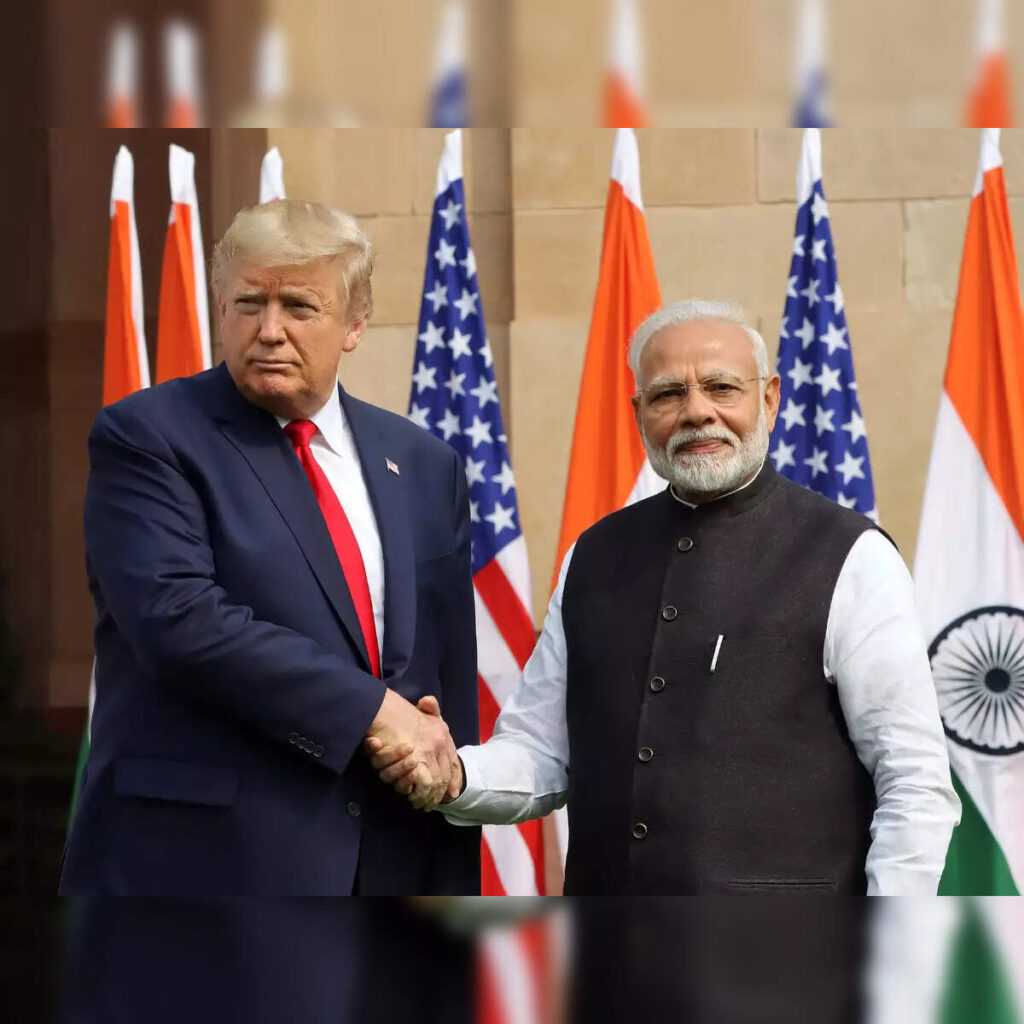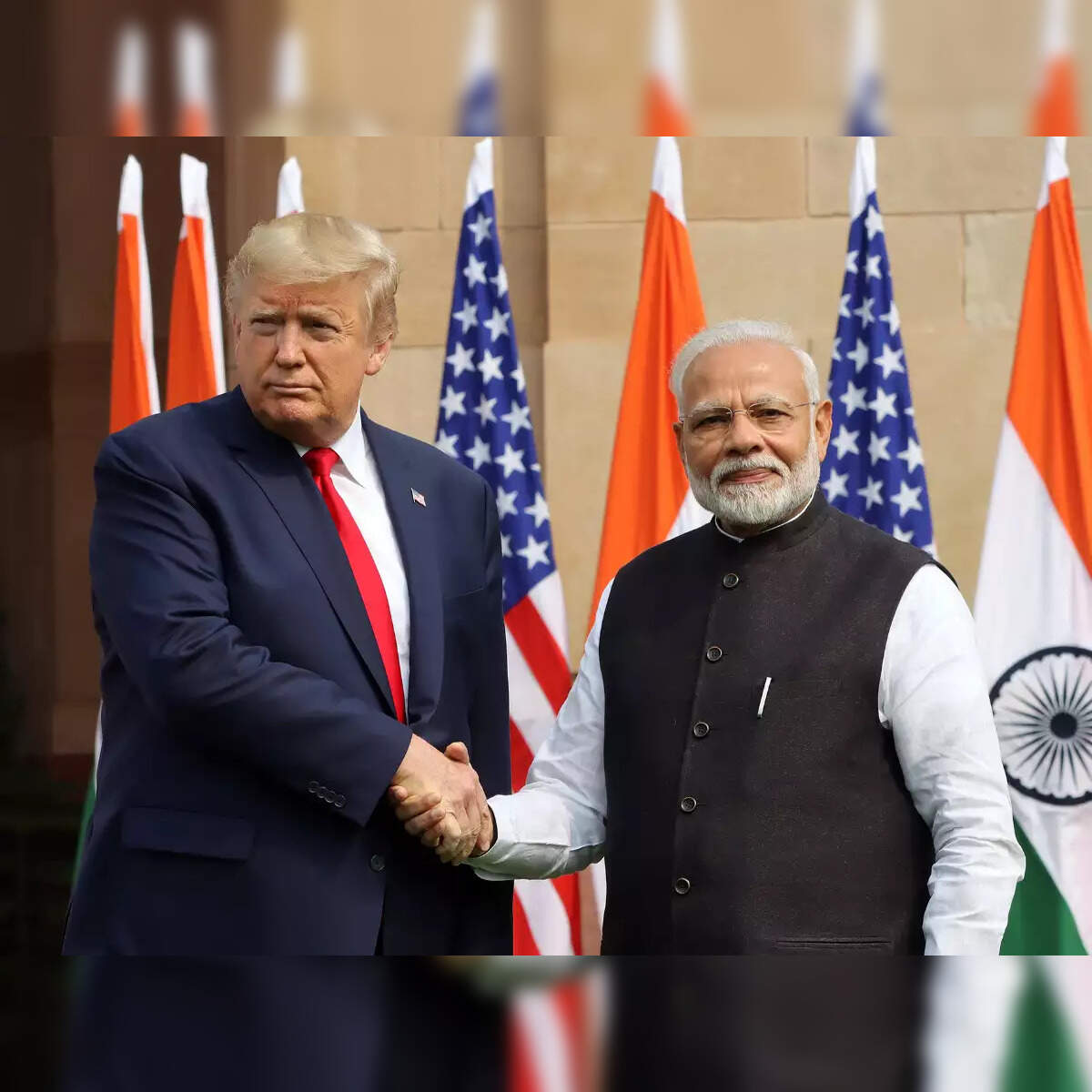
By K Raveendran
In both foolhardiness in decision making and shameless flip-flop in dealing with disastrous aftermaths, Narendra Modi and Donald Trump have exhibited a total lack of honesty in admitting their mistakes. The similarity is too striking to be missed.
Thanks to recklessness and impulsiveness in decision making—Narendra Modi with demonetization and Donald Trump with the launch of a global tariff war—both leaders eventually found themselves grappling with the fallout of their decisions. When it became evident that these policies had inflicted massive, but arguably avoidable damage on their respective nations, both attempted to shift the narrative. Rather than taking responsibility or acknowledging mistakes, they chose to reframe their failures through a lens of emotional nationalism, transforming economic disasters into tests of patriotism and national resolve. The striking commonality in their responses reveals not only the style of their leadership but also the ways in which populist rhetoric can deflect accountability.
Narendra Modi’s decision in November 2016 to demonetize ₹500 and ₹1,000 notes—a move that effectively rendered 86% of India’s cash invalid overnight—was announced with little warning and minimal consultation. Framed as a bold assault on black money, corruption, counterfeit currency, and terror financing, the policy was sold to the public as a moral and patriotic duty. Citizens were told that the move would cleanse the economy and bring long-term benefits. However, within days, the devastating consequences began to unfold.
India’s economy, heavily reliant on cash transactions and dominated by an informal sector, came to a grinding halt. Small businesses closed, agricultural transactions stalled, and countless daily-wage labourers found themselves without work. People stood in endless queues outside banks to exchange their invalidated currency, with over 100 reported deaths linked to the chaos. Despite these immediate and visible hardships, the government insisted that the pain was necessary and temporary, and that the policy would yield rich dividends in due course.
As months passed, the economic justifications for demonetization began to unravel. Over 99% of the demonetized currency returned to the banking system, undermining the idea that the move had unearthed hidden caches of black money. Terror financing and counterfeit currency—two of the other stated targets—saw no significant decline. Independent studies and reports from financial institutions suggested that the economic shock had slowed growth, disrupted supply chains, and accelerated job losses.
Yet, even as evidence mounted, Modi’s administration refused to concede failure. Instead, it pivoted—first emphasizing the digitalization of payments and then promoting the idea of formalizing the economy. The narrative kept evolving, not in response to policy reassessment, but to protect the political sanctity of the decision. Modi’s refusal to admit fault was accompanied by an emotional appeal to the public, invoking patriotism and sacrifice. The suffering of ordinary people was reinterpreted as an act of national heroism. Citizens were asked to be proud of their endurance, as if their pain alone validated the policy’s merit.
Similarly, Donald Trump’s decision to launch a tariff war—primarily targeting China but also affecting longstanding allies like Canada, Mexico, and the European Union—was framed as a bold correction to decades of unfair trade practices. Trump claimed that the U.S. had been exploited through lopsided trade deals and that tariffs would restore balance, protect American jobs, and revive the manufacturing sector. The reality, however, proved more complex and damaging. The tariffs led to retaliatory measures from other nations, triggering a spiral of economic confrontation.
Despite these setbacks, Trump remained defiant. Like Modi, he refused to accept that the policy was flawed. Instead, he insisted that the tariff war was working, even when the data indicated otherwise. His administration would oscillate between different rationales—first touting the tariffs as a way to reduce the trade deficit, then as a tool to bring China to the negotiating table, and later as a means of securing better intellectual property protections. The shifting justifications mirrored Modi’s demonetization narrative: fluid, politically convenient, and untethered from concrete outcomes. At no point did Trump admit to any miscalculation or error in strategy. When pressed on the economic damage, he often blamed others—China, the Federal Reserve, previous administrations, or unpatriotic corporations that had offshored jobs.
In both cases, the leaders relied heavily on emotional nationalism to shield themselves from criticism. For Modi, demonetization was transformed from a policy decision into a patriotic exercise. The narrative emphasized the need to fight corruption and cleanse the system, appealing to deep-seated public frustration with inequality and black money. For Trump, the tariff war became a symbolic struggle to “put America first,” framed as an economic battle for sovereignty and dignity. He portrayed critics of the trade war as globalists and traitors who failed to protect American interests. The invocation of national pride served to delegitimize opposition and sideline nuanced debate.
This style of governance—one that eschews policy recalibration in favour of narrative control—reflects a broader populist impulse. Both leaders sought to cultivate an image of infallibility and strength. To admit a mistake would be to show vulnerability, a trait neither Modi nor Trump was willing to display. Instead, they leveraged emotional appeals to rally their base, trusting that symbolic gestures and rhetorical theatrics would outweigh economic pain in the public’s memory. In this sense, both demonetization and the trade war were less about their stated goals and more about reinforcing the personal brands of the leaders who championed them.
The refusal to admit failure also revealed how these leaders understood power. For them, power was not about policy success measured in empirical terms but about dominance over narrative and control of perception. They treated criticism as betrayal, often suggesting that dissenting voices were motivated by self-interest or ideological bias. This rejection of accountability—coupled with the exploitation of patriotic sentiment—allowed them to avoid serious political repercussions, at least in the short term.
What is perhaps most striking is the way both leaders, even while adjusting their messaging in response to backlash, never truly changed course. Modi introduced new slogans and subtly distanced himself from the initial claims of demonetization’s purpose, but never admitted it was a mistake. Trump has similarly put the Americans as well as the world to great harm, yet continues to declare victory. These flip-flops were not confessions of failure but tactical shifts, carefully couched in triumphalist language. The recalibration of narrative served to obscure the fact that the original policies had failed by their own metrics.
In the end, both Modi and Trump exemplify a political style in which reckless decisions are not evaluated by their results but by the emotional responses they generate. Their unwillingness to acknowledge error—and their skill in rebranding failure as patriotism—highlight a broader erosion of policy-based governance. They have weaponized national identity to defend poor decisions, in the process subjecting their nations to suffering. (IPA Service)

